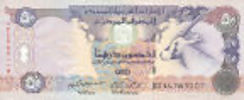The Portuguese entered the Persian Gulf in the early 1500s, and the British East India Company arrived about 100 years later. In 1819-1820 the British attacked the coastal ports and exacted the General Treaty of 1820, by which the local inhabitants renounced piracy. By 1853 the Treaty of Maritime Peace in Perpetuity had been signed, and the area became known as the Trucial Coast. A Treaty of Exclusive Relations was signed with Abu Dhabi, Dubai, Sharjah, Ajman and Umm Al Qiwair in March 1892. The Trucial States included seven Sheikdoms and their dependencies (Abu Dhabi, Ajman, Dubai, Ras al Khaima Fujairah, Sharjah and Umm al-Qaiwain).
From 1873 to 1947 the Trucial Coast was administered by British India and after 1947 by the British Foreign Office, but the British never assumed sovereignty. Each state maintained full internal control. In 1960 the Trucial States Council was formed, with representation from the rulers of the various states. In 1968 the Trucial States joined Bahrain and Qatar, which were also under British protection, in the Federation of Arab Emirates. When the United Kingdom ended its military presence in the Persian Gulf in 1971, the Trucial States federated and became known as the United Arab Emirates on December 2, 1971.
Hellenistic coins were used in Qatar during the third century BC. Iranian and Iraqi coins were used during Islamic times, but the first coins were not produced locally until 1966.
Gold and silver coins, particular gold British sovereigns and silver Maria Theresa thalers, were widely used into the 1960s even after local note currencies and coins were established. Indian Rupees (INR) circulated in Bahrain until April 28, 1959, when the Persian Gulf Rupee (XPGR), issued by the Reserve Bank of India, was created for use in the Persian Gulf. India devalued its Rupee on June 6, 1966 which affected the value of the Gulf Rupee, forcing the states using the Gulf Rupee to introduce their own currency.
The Trucial States excepting Abu Dhabi used the Saudi Riyal from June 16, 1966 to September 17, 1966. On September 17, 1966, all the Trucial States except Abu Dhabi adopted the Qatar-Dubai Riyal as their medium of exchange. On May 19, 1973 Qatar introduced its own currency, and Dubai joined the other members of the United Arab Emirates to issue its own currency through the United Arab Emirates Currency Board.
Abu Dhabi adopted the Bahrain Dinar, equal to 10 Persian Gulf Rupees, beginning on June 16, 1966 and continued to use the Bahraini Dinar until May 19, 1973 when the United Arab Emirates Dirham, divisible into 1000 Fils replaced the Qatar-Dubai Dinar at par.
Bahrain Dinar were interchangeable with UAE Dirhams from January 1, 1976 until May 5, 1979 at the rate of 1 Dinar equal to 10 Dirhams, and Qatar Riyals were interchangeable with UAE Dirhams at par from September 1, 1976 until May 5, 1979.
The United Arab Emirates Dirham was issued by the United Arab Emirates Currency Board from May 19, 1973 until December 11, 1980, and by the United Arab Emirates Central Bank thereafter. Some of the individual Emirates have issued coins, but primarily for numismatic purposes.


